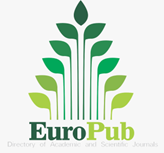Enhanced photocatalytic degradation of methylene blue in textile wastewater using high-crystallinity TiO2 nanotubes synthesized by post-hydrothermal treatment
DOI:
https://doi.org/10.61511/wass.v1i2.2024.1662Keywords:
TiO2 nanotubes, post-hydrothermal, methylene blue wastewaterAbstract
Background: The textile industry has seen rapid progress but is also responsible for wastewater pollution, especially from dye substances such as methylene blue, which are difficult to degrade. The need for efficient wastewater treatment is crucial in addressing environmental issues related to textile production. Photocatalysis is one promising method for wastewater treatment, utilizing titanium dioxide (TiO2) as a photocatalyst. One approach to enhance the photocatalytic activity of TiO2 is to modify its structure into nanotubes, which offer a high surface area-to-volume ratio. This study aims to synthesize TiO2 nanotubes with high crystallinity for improved photocatalytic performance. Methods: TiO2 nanotubes were synthesized using a post-hydrothermal treatment process, followed by characterization using scanning electron microscopy (SEM) to evaluate the morphology of the nanotubes. The degradation of methylene blue was used as a model for evaluating the photocatalytic activity of the synthesized TiO2 nanotubes under optimal conditions. Findings: The SEM characterization revealed that TiO2 nanotubes synthesized at 100°C exhibited the best structure, leading to superior photocatalytic performance. These nanotubes were effective in degrading methylene blue, demonstrating a higher degradation rate compared to other conditions. Conclusion: The post-hydrothermal synthesis of TiO2 nanotubes at 100°C results in enhanced photocatalytic activity, making it a promising material for textile wastewater treatment, specifically for methylene blue degradation. Novelty/Originality of this article: This study presents a novel application of TiO2 nanotubes synthesized through post-hydrothermal treatment to address the degradation of methylene blue in textile industry wastewater. The use of optimized synthesis conditions for improved photocatalytic performance contributes new insights into the field of wastewater treatment technologies.
References
Gao, B., Chen, G. Z., & Puma, G. L. (2009). Carbon nanotubes/titanium dioxide (CNTs/TiO2) nanocomposites prepared by conventional and novel surfactant wrapping sol–gel methods exhibiting enhanced photocatalytic activity. Applied Catalysis B: Environmental, 89(3-4), 503-509. https://doi.org/10.1016/j.apcatb.2009.01.009
Hayashi, H., & Hakuta, Y. (2010). Hydrothermal synthesis of metal oxide nanoparticles in supercritical water. Materials, 3(7), 3794-3817. https://doi.org/10.3390/ma3073794
Kasuga, T., Hiramatsu, M., Hoson, A., Sekino, T., & Niihara, K. (1998). Formation of titanium oxide nanotube. Langmuir, 14(12), 3160-3163. https://doi.org/10.1021/la9713816
Naimah, S., Jati, B. N., Aidha, N. N., & Cahyaningtyas, A. A. (2014). Degradation of dye in textile industry wastewater using photocatalytic method with TiO2-zeolite nanocomposite. Jurnal Kimia dan Kemasan, 36(2), 225-236. http://dx.doi.org/10.24817/jkk.v36i2.1889
Parent, Y., Blake, D., Magrini-Bair, K., Lyons, C., Turchi, C., Watt, A., Wolfrum, E., & Prairie, M. (1996). Solar photocatalytic processes for the purification of water: State of development and barriers to commercialization. Solar Energy, 56(5), 429-437. https://doi.org/10.1016/0038-092X(96)81767-1
Utubira, Y., Wijaya, K., Triyono, T., & Sugiharto, E. (2006). Preparation and characterization of TiO2-zeolite and its application to degrade textile wastewater by photocatalytic method. Indonesian Journal of Chemistry, 6(3), 231-237. https://doi.org/10.22146/ijc.21724
Yuwono, A. H., Sofyan, N., Kartini, I., Ferdiansyah, A., & Pujianto, T. H. (2011). Nanocrystallinity enhancement of TiO2 nanotubes by post-hydrothermal treatment. In Advanced Materials Research (Vol. 277, pp. 90-99). Trans Tech Publications.
Downloads
Published
Issue
Section
Citation Check
License
Copyright (c) 2025 Eddy Nana Priayatna, Hernowo Widodo

This work is licensed under a Creative Commons Attribution 4.0 International License.














